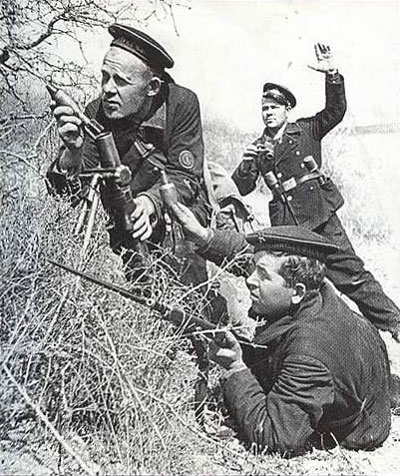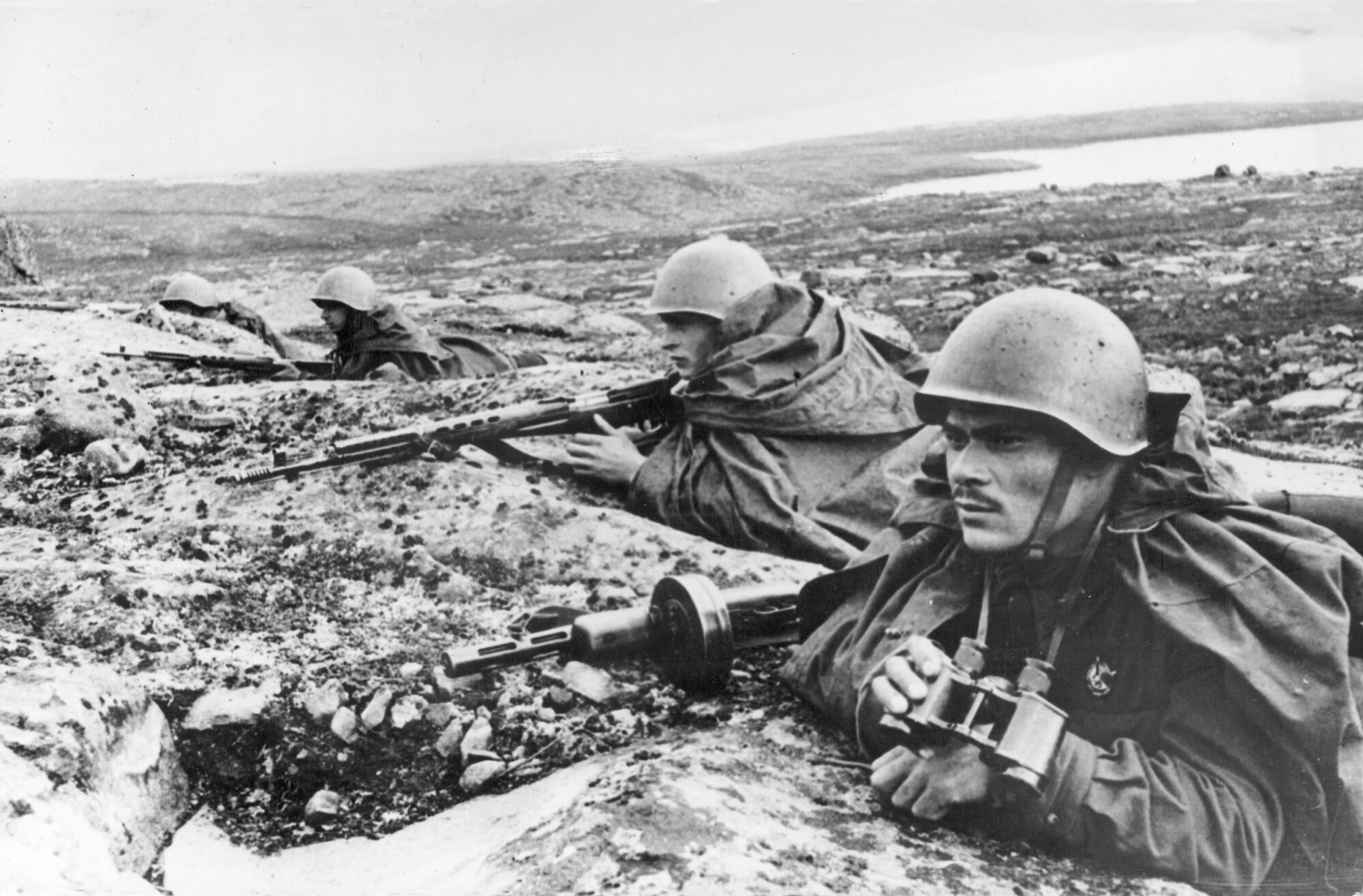Maxim-Tokarev Light Machine Gun
Matt recently had the opportunity to visit the excellent Menorcan Military Museum at Es Castell, on the Spanish Balearic Island of Menorca. The museum is well worth a visit and the Maxim-Tokarev was one of the very rare and extremely interesting weapons they have on display.

Soviet troops disassembling an MT light machine gun, note the hinged stock pivoted down to allow access to the action (source)
The Maxim-Tokarev (MT) Light Machine Gun was developed at the request of the Soviet military high command in the early 1920s, following the end of the Russian Civil War. Influenced by the German MG08/15, Tokarev set out to lighten the Maxim M1910. The MT was one of two designs submitted for testing. Designed by Fedor Tokarev, at the Tula Arms Factory, the MT was tested along side Ivan Kolesnikov’s similar Maxim-Kolesnikov light machine gun. Development ended in 1924 and the MT went into initial production in 1925 with the first weapons successfully tested against the Maxim-Kolesnikov.

The MT’s principle rival the Maxim-Kolesnikov, note the unconventional butt stock (from Chinn’s The Machine Gun Vol.2)
Production continued until at least 1928, while many sources suggest 1927, the example featured in the video dates from 1928. Sources suggest Tula produced 3,500, however, this number does not match with the suggested export numbers and the featured example is serial number 5283.

Tokarev, and his son, posing with several MT light machine guns, c.1925 (source)
The MT is based upon the Russian M1910 Maxim gun, using the same short recoil, toggle locked action. It was hoped that established tooling would be able to make some of the new light machine gun’s parts. The weapon weighed 12.9kg unloaded and Tokarev made extensive efforts to lighten the weapon with the the water-cooled barrel jacket replaced by a perforated shroud to allow air cooling. The receiver also has a large number of lightening cuts to shave off weight.
In his 1952 book ‘The Machine Gun Vol.2, Pt. VII’, George Chinn suggested that the Tokarev may have been influenced by an earlier design patented in 1909, by Vickers Sons & Maxim Ltd. designers Arthur Dawson and George Buckham. The patent shows a Maxim-derived light machine gun with a very similar layout to the MT.

Dawson & Buckham’s patent for a Maxim light machine gun (Patent)
The M1910’s spade grips were replaced by a wooden butt stock and a new trigger mechanism and a non-adjustable bi-pod was added at the muzzle. The butt-plate was hinged to offer additional stability and the weapon’s barrel could be changed in the field.
The MT fed from a 100-round canvas belt and chambered the standard Russian 7.62x54mmR cartridge. The belt was held in a drum suspended beneath the weapon and when loaded weighed approximately 15kg. Following troop trials a number of changes were suggested, some improvements were made but the decision was made to move away from the MT.

Spanish Republican troops defend a barricade with an MT (source)
The MT was eventually replaced in Russian service in the late 1920s by the Degtyaryov-designed DP-28 light machine gun. The remaining MTs were sold to Spain and China during the 1930s. These guns saw extensive use during the Spanish and Chinese Civil Wars.
If you enjoyed the video and this article please consider supporting our work here.
Technical Specifications:
Length: 130cm (51in)
Weight (unloaded): 12.9kg (28lb 4oz)
Barrel Length: 65cm (25.5in)
Action: Short recoil, toggle locked
Calibre: 7.62x54mmR
Feed: 100-round belt
Cyclic Rate: ~600rpm
Russian Naval Infantry
From Wikipedia, the free encyclopedia
Russian Naval Infantry
Морская пехота России
Morskaya Pekhota Rossii

Unofficial emblem of the Russian Naval Infantry
Founded 1696–1917, 1992–present
Country ![]() Russia[a]
Russia[a]
Branch ![]() Russian Navy
Russian Navy
Type Naval infantry and Naval special forces
Size 12,000 personnel, incl. 800 commando frogmen[1][2]
Part of [Coastal Defense Forces]
The Russian Naval Infantry (Russian: Морская пехота России, romanized: Morskaya pekhota Rossii, lit. ‘Russian sea infantry’), often referred to as Russian Marines in the West,[4] operate as the naval infantry of the Russian Navy. Established in 1705, they are capable of conducting amphibious operations as well as operating as more traditional light infantry.
The Naval Infantry also fields the Russian Navy’s only special operations unit, known as the ‘commando frogmen’. Frogmen are typically drawn from the Naval Infantry’s ranks, and they are capable of a wide range of special operations tasks and missions. Colloquially, Russian-speakers may refer to Naval Infantrymen using the abbreviation морпехи (morpekhi (plural), singular form: морпех (morpekh)).




